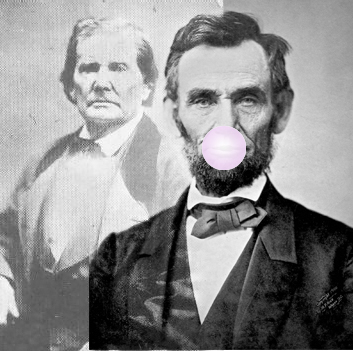 Influence is powerful. As human
beings, we are drawn to influential people. We put a lot of stock in the
opinions and values of certain people. In marketing, if you can gain the favor
of the influencers, you will win over more customers.
Influence is powerful. As human
beings, we are drawn to influential people. We put a lot of stock in the
opinions and values of certain people. In marketing, if you can gain the favor
of the influencers, you will win over more customers.
Who are the influencers of your
customers? These people may not buy anything from you, but they hold sway over
your customers’
opinions about buying from you. Every person has other people who influence
them. It’s
the reason your mother told you to stay away from the wrong crowd when you were
a child. These influencers help us form opinions and, sometimes, deeply held
values.
Here is an example of an influencer.
It is said that President Abraham Lincoln and his father, Thomas Lincoln, were
estranged from one another as adults. Thomas never met Abe’s wife or
children and Abe did not attend his father’s funeral.
However, as a staunch abolitionist, the father of the president influenced his
son at a very young age to disdain slavery. It is one of the reasons that
Thomas moved the family out of slave holding Kentucky into Indiana when Abe was
seven years old. Thomas was not known for much – he drifted
from one job to another and, by all accounts, he was illiterate. However,
everywhere he lived, he took a stand against slavery. It was his passion. We
likely would never had heard of Abraham Lincoln if it were not for his strong
convictions about slavery - and he probably would not have held those convictions
if it were not for the influence of his father.
What can you do to shape the opinions
of the influencers? First, find out who your customers value as influencers.
Here is a simple exercise. Write down a list of your customers. This could be
individual names or groups of people. Beside each one, list the people or
groups who influence their decision making process. For instance, if your
customers are CEOs of large companies, they may be influenced by their lawyers,
accountants, and other CEOs who are their peers. If your customers are mothers
of preschool aged children, they may be influenced by their pediatricians,
bloggers who write about the development of young children, and their parents.
Next, devise a way to paint your company or product brand in a favorable way to
the influencers. Seek their approval.
Involve them in your marketing process. For instance, Trident sugarless
gum for years had a tagline that stated four out of five dentists surveyed
recommend sugarless gum for their patients who chew gum. Do you know how that
tagline came to be? Were the marketers of Trident trying to get dentists to
chew their gum? No, they wanted the influence of dentists to reach their target
market. Trident first marketed its sugar-free gum in 1964 when dental reports
were linking tooth decay to sugar. Many dentists were urging their clients to
give up on chewing gum. Reacting to those reports, the makers of Trident turned
the tables. Trident brilliantly used the influence of dentists to sell their
new product, which they claimed promoted dental health. They later used the American
Dental Association’s
seal of approval on their packages. It was a marketing plan based entirely on
influence.
What do Abraham Lincoln's views on slavery and an advertising slogan for sugar-free gum from 1964 have to do with each other? They both are examples of influence in the way we think. Those who influence our decision making are often ignored by marketing, but they
should be key to your marketing efforts. Most of the time your
customers may not even know that they have bought into the influence of others,
but it is obvious that we have all been impacted in our purchasing decisions
whether we are aware of it or not. Lincoln may not have recognized where his
opinions on slavery came from, but it is hard not to see the influence of his
father. And you may not know why you
would believe that sugar-free gum is healthier for your teeth over regular,
sugar-sweetened gum, but my guess is, if you chew gum, you hold that to be
true. It all stems back to influence marketing that is 50 years old.